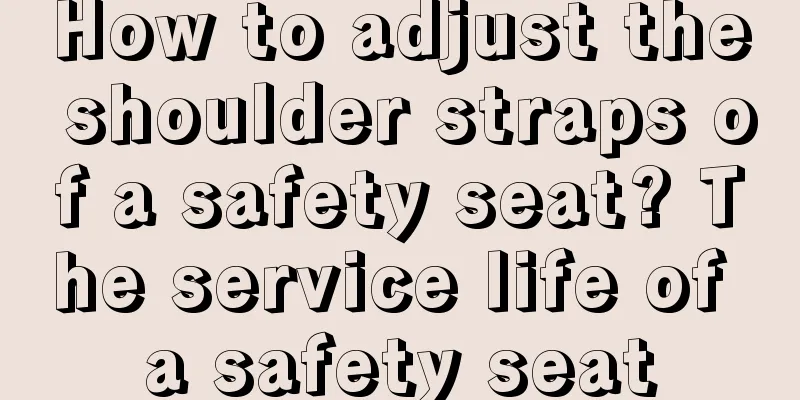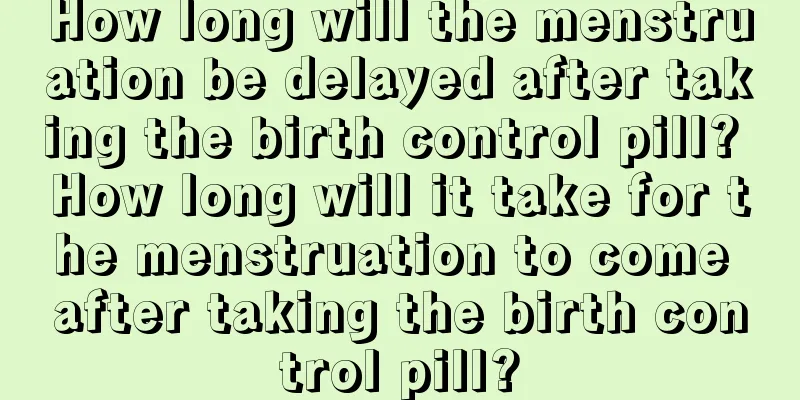How to adjust the shoulder straps of a safety seat? The service life of a safety seat

|
We all know that a safety seat is a product used to protect the safety of babies. Many babies have used it, and parents know that the shoulder straps of a safety seat are adjustable. So how do you adjust the shoulder straps of a safety seat? What is the service life of a safety seat? How to adjust the shoulder straps of a safety seatFirst, to adjust the length of the safety seat shoulder strap, pull the backrest (harness height adjuster) to the highest position, then press the harness adjust lever (the small button, there is a small gap on the seat before the crotch safety belt, you can touch a switch by inserting your finger), and pull the chest clip (the horizontal hook that buckles the shoulder strap). There is a Y-shaped metal buckle on the back of the seat, which connects all the safety belts. Pull the belt loose and adjust the shoulder strap from the front. At this time, the tightened belt at the bottom of the front will only be about 10cm. After the child is tied up, pull the belt hard again, and it can be pulled out several dozen centimeters. When you hear a click, it means that the shoulder strap is tied properly. The lifespan of a safety seatAccording to the answers given by well-known foreign manufacturers and child occupant safety technicians, the service life of child safety seats is generally 5-6 years, and the service life is 6 years from the date of production. The specific service life can be checked in the instructions. Of course, some manufacturers do not indicate it, so it is calculated as 6 years. It is best not to continue using child seats that have been used for more than 6 years. Please pay attention to letting your baby use different types of seats at different stages, and you cannot say that you must use the seat until the full service life. If your seat has an accident, you can no longer use it and need to replace the seat. There are also different installation methods for different age groups: safety seats for infants under 4 years old must be installed in reverse and only in the back seat. For children over 4 years old, the safety seat can be installed forward, and the fixing method is a seat belt or a special interface. Children over 7 years old can use a booster cushion and use an adult seat belt in conjunction. How to choose a child safety seatLook at the material and filling of the child safety seat. Do not choose a child safety seat with a pungent smell. Pungent smell means that young children will feel uncomfortable and may irritate the child's tender skin. Safety seats need to withstand a certain impact force, so in addition to their own structure, the selection of fillings is also very important. Most counterfeit products use foam plastics, which do not meet the standards in terms of functionality or environmental protection. At present, high-quality seats have chosen a thermoplastic filling material called "ESP", which has good cushioning, shock resistance, heat insulation, and heat preservation. Look at the comfort of the child safety seat. When choosing a seat, carefully observe the fineness of the air holes in the fabric, whether it is breathable, and whether it has sufficient elasticity and toughness. Especially for infants and young children, the breathability and softness of the cushion must be paid special attention. If the child safety seat is more comfortable, the child will also like to sit on it and will not dance to distract you. Is the safety seat installed on the left or right?For safety, child safety seats should be placed at the left rear. Safety seats are placed on the left because: seat belts have the best fixing effect, and drivers will instinctively protect the left and give up the right. Some seven-seat models also have installation interfaces in the third row, so can child seats be installed in this row? We do not recommend installing them in the third row, because the last row has too little buffer space in the event of a rear-end collision, and now collision tests do not conduct rear-end safety tests, and manufacturers are unwilling to spend too much effort on this. Once there is a rear-end collision, the third row is more likely to be more injured than the front row. Moreover, in terms of the convenience of taking care of the baby, the third row is generally not as convenient as the second row. |
<<: How big is the baby's safety seat? How to install the safety seat correctly
>>: Does toothpaste have the effect of reducing swelling? Is toothpaste corrosive?
Recommend
How much is the government subsidy for having a second child? Is there any government subsidy for having a second child?
The relaxation of the two-child policy has made m...
How to recover after childbirth How to lose weight healthily after childbirth
Most mothers will gain weight after giving birth....
Is the Thai TwinLotus Chinese Herbal Toothpaste good to use? Review
Toothpaste is a necessity in our daily life. We a...
How much calcium is appropriate for pregnant women to take in a day? What are the effects on the fetus if pregnant women take too much calcium?
Pregnant women drink milk powder during pregnancy...
Can Haichang Care Solution be used to soak contact lenses? How long can Haichang Care Solution be used after it is opened?
Like contact lenses, cosmetic contact lenses need...
Can I eat Liangpi after confinement? Can I eat Liangpi after confinement?
Summer is coming soon, and some pregnant women sh...
Is it good to eat ginseng during pregnancy? How to eat ginseng during pregnancy
Ginseng is a very nutritious supplement and one o...
Can a three-month-old baby use a pillow? How many centimeters can a three-month-old baby use a pillow?
Pillows are something we almost always use when w...
Can pregnant women eat porcini to relieve fatigue?
Pregnant women can eat porcini mushrooms. Porcini...
How to choose newborn diapers? Which brand of newborn diapers is good?
New mothers always want to give their children th...
What characters are good for naming babies born in the Year of the Rat? Taboos for naming babies born in the Year of the Rat in 2020
There is still one month left until the Year of t...
Can eating more kelp help you have a boy? Can eating kelp often help you have a boy?
Some mothers want to have a boy, but they can'...
What are the specific steps of the LeBoyet method? What are the benefits of the LeBoyet method?
During childbirth, shifting the focus to the baby...
Do I need to be on an empty stomach to test the pregnancy stick? Can I test the pregnancy stick after a meal?
In the early stages of pregnancy, it is best to u...
What medicine can babies take for flatulence? How to prevent baby flatulence
Infant flatulence is a common phenomenon. Many ne...









